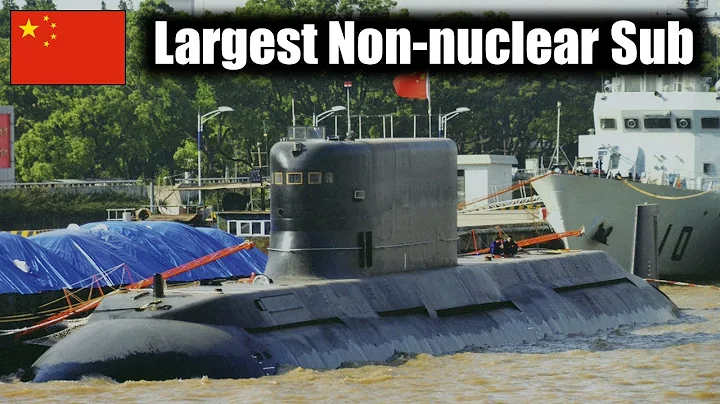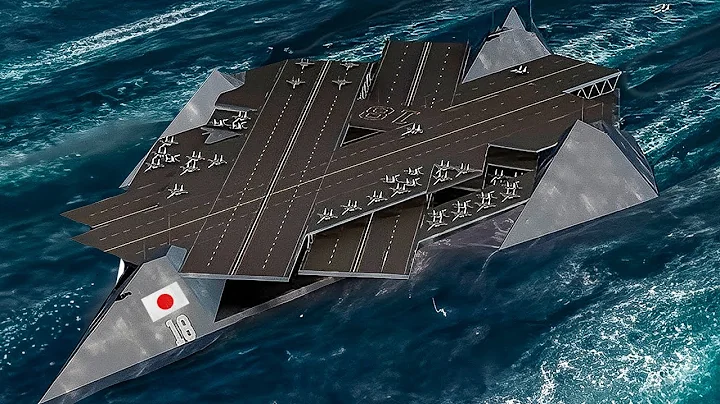The US military has stepped up the deployment of military equipment in the Indo-Pacific region, including the deployment of aircraft carriers and stealth fighter jets, while also strengthening military cooperation with Japan and South Korea. The United States is messing up Europe, trying to mess up Asia again, and ultimately messing up the world, achieving the United States' ambition to dominate the world. Senior U.S. official Aquilino exaggerated China's threat, saying that China has made progress in naval ships, missile technology and nuclear deterrence capabilities, which can be called the "largest military construction" since World War II. The most important thing is to exaggerate the increase in China's military strength. Risk of attacking US territory Guam .

Aquilino has served as the commander of the U.S. Indo-Pacific Command since he succeeded Davidson. This senior U.S. official has frequently spoken out against China, claiming that the U.S. military can travel freely wherever international law permits. In short, this senior U.S. official is quite arrogant, making excuses for the United States to undermine peace in the Asia-Pacific region and justify the U.S. Navy's P-8A "Poseidon" anti-submarine patrol and reconnaissance aircraft for close reconnaissance. The U.S. military is advancing the "Indo-Pacific Strategy" and the "Pacific Deterrence Plan" in the Indo-Pacific region, increasing military budgets to focus on the Indo-Pacific region, deploying broader military forces in the region, improving logistics, air defense and other measures to further strengthen the U.S. Military forces west of the Hawaiian Islands .

U.S. Secretary of Defense Austin declared that the Indo-Pacific region is the core of the U.S. military’s macro strategy and will strengthen its military capabilities in Asia and sell more advanced military equipment and technical capabilities to countries such as Australia and Japan. The U.S. military will also Military deployment in the second island chain is being strengthened, including increasing the number of attack nuclear submarines at the Guam military base from 5 to 6. In order to ensure the scale of the US Navy's operations in the Western Pacific, more advanced fighter jets and Warships, drones and long-range missiles .

As the United States strengthens its military deployment in the Western Pacific. According to an article published in the U.S. Air Force Magazine, Commander Aquilino of the U.S. Indo-Pacific Command clamored for the U.S. Air Force to regularly deploy its domestically deployed F-22 and F-35 stealth fighter aircraft closer to China to achieve the goal of moving the U.S. Air Force's domestically deployed F-22 and F-35 stealth fighters closer to China. The fifth-generation fighter jets are permanently deployed in the second island chain. Compared with the past, the U.S. Air Force regularly dispatched F-22 and F-35 fighter jets from military bases in Alaska, Utah, and Hawaii in the United States, and dispatched fifth-generation fighter jets deep into the Pacific Ocean. regions, and at the same time the air force conducts military activities around China, but all such military activities are short-lived. The U.S. Air Force will deploy F-22 and F-35 stealth fighter jets closer to Chinese military bases to achieve regular deployment. It will use the characteristics of its stealth fighter jets to strengthen its stealth deterrence capabilities against China and support the U.S. Air Force’s deterrence operations in sensitive areas and airspace. Mainly in the South China Sea and Taiwan Strait areas.

Aquilino said that the Guam military base is crucial to the US military's "Indo-Pacific strategy" and emphasized the strategic importance of Guam. U.S. media pointed out: The U.S. Air Force has never deployed stealth fighters on a regular basis east of the International Date Line. All active U.S. Air Force F-22 and F-35 stealth fighter jets are deployed in the United States and at military bases in Hawaii. Aquilino advocates F-22 and F-35 stealth fighter jets are deployed close to China. Obviously, military bases in Japan and South Korea are important deployment targets for the United States.

At this stage, the US Navy has deployed F-35B fighter jets at the Iwakuni military base in Japan, stationed with two F-35B fighter squadrons, and the US Navy aircraft carriers equipped with F-35C carrier-based aircraft are also regularly deployed in the Indo-Pacific region. At the same time, the United States sells F-35 fighter jets to Japan, South Korea, and Australia. As the U.S. Navy's F-35 fighter jets are deployed regularly in the Indo-Pacific region, the U.S. Air Force's fifth-generation fighter jets are always deployed thousands of miles east of the International Date Line, and F-35 fighter jets are deployed at the Eielson Air Force in Alaska. bases, while F-22 fighter jets are deployed at military bases in Alaska and Hawaii.

The U.S. Air Force deploys three military bases in Japan, including Misawa Air Base , Kadena Air Base and Yokota Air Base . It also deploys two military bases in South Korea, including Osan Air Base and Group Shan Air Force Base, but all deployments are US Air Force F-16, F-15 and A-10 fighter jets, which obviously cannot achieve the purpose of deterrence of the US military. At present, frontline deployment and military penetration capabilities are the most important for the U.S. military. Expeditionary combat capabilities and mobile deployment and decentralized deployment at important military bases in the Indo-Pacific region are also goals that the U.S. Air Force wants to achieve.

The U.S. military is equipped with nearly 800 fifth-generation fighter jets, including 600 F-35 fighter jets and 183 F-22 fighter jets. However, there are very few frontline stealth fighter jets regularly deployed in the second island chain, except for those deployed in Japan. With 36 F-35B fighter jets, plus the 12 F-35C fighter jets carried by the USS Lincoln aircraft carrier, the actual regular deployment of fifth-generation fighter jets is quite limited, with the maximum total number being 44.

Aquilino did not specify where the U.S. Air Force’s F-22 and F-35 stealth fighter jets will be deployed on a regular basis, but emphasized that the Guam region is an “absolute strategic location,” which means that the Guam region is a key deployment area for the U.S. Air Force’s fifth-generation fighter jets. , in addition to the US military strengthening the deployment of military forces in the Asia-Pacific region, it hopes to deploy fifth-generation stealth fighters forward. In contrast the Chinese Air Force is also strengthening its overall combat capabilities, deploying nearly 200 J-20 fighter jets, and the J-20 fighter jets are equipped with four pulsating production lines and are increasing at a rate of 48 aircraft per year. At the same time, the Chinese Air Force is equipping J-16 and J-10C fighter are based on the J-11B fighter to build the J-11BG fighter.
When the total number of fifth-generation fighter jets deployed by the United States, Japan and South Korea is combined, it is difficult to form an advantage in the quality and quantity of stealth fighter jets. Moreover, the F-35 fighter jet is a low-version fifth-generation fighter jet, and it is difficult to have an advantage in quantity and quality. The US military Commander Aquilino of the Indo-Pacific Command asked the United States to deploy fifth-generation stealth fighter jets, focusing on F-35 fighter jets, closer to China, relying on stealth fighter jets to gain control and air superiority in the Asia-Pacific region.

In fact, the idea of Aquilino, commander of the U.S. Indo-Pacific Command, is also whimsical. Looking around the countries and military bases where the U.S. military best deploys stealth fighters in the Asia-Pacific region, apart from the U.S. Air Force military bases in Japan and South Korea, I am afraid it is the Guam Air Force Base, but The U.S. Air Force's stealth fighter jets are also in crisis. Compared with Japan and South Korea, the Guam military base is farther from China, but it is still within the strike range of China's medium and long-range ballistic missiles. If the U.S. Air Force deploys its stealth fighter jets forward, it will be closer to the Chinese Rocket Force. An area where multiple means are used to carry out efficient strikes. This approach directly pushes the US Air Force into a pit of fire.
The Chinese Rocket Force is developing long-range strike capabilities and is equipped with medium- and long-range ballistic missiles with longer ranges. The Guam military base is within the strike range, which means that the US military will increase long-range strike capabilities and defense capabilities at the Guam military base, and at the same time establish a missile defense bases, etc., to establish a series of new defense systems in the Guam area, and the Chinese Rocket Force will deploy Dongfeng-15/16/17 ballistic missiles, coupled with the number of AKD-20 air-launched cruise missiles, which can offset the stealth advantage of the US Air Force . The U.S. Air Force's military deployment in the Asia-Pacific region will be a passive target with high investment and low value. Once a military conflict breaks out between China and the United States, China's deployment of medium- and long-range missiles can launch attacks on U.S. Air Force military targets in the Asia-Pacific region, including Japan, South Korea and other U.S. Air Forces and Guam military bases. ballistic missile and cruise missile fire attack.

China can rely on its numerical advantage in deploying ballistic missiles and cruise missiles to launch tactical saturation strike capabilities and directly paralyze high-value targets at US Air Force military bases in the first wave, such as stealth fighters and air defense systems , which means that the US Air Force will Losing its air raid capability, and thus losing its air superiority over the entire first island chain.Moreover, the U.S. military is moving to the second island chain to strengthen the hub position of the Guam military base. However, this strategic retreat and transfer cannot resolve the problem of the Dongfeng-26 medium and long-range missile attack on the Guam military base under the attack of China's ballistic missiles and cruise missiles. Can threaten the survival of Guam military bases.

After the US Air Force announced that it will deploy F-22 and F-35 fighter jets close to China, China can rely on short- and medium-range missiles and medium- and long-range missiles to form a balance with the United States, carry out tactical strikes within the first island chain, and directly saturate targets. Conducting strategic strikes against targets in the second island chain and adopting deterrence military measures can prevent the US Air Force from acting rashly. Commander Aquilino of the U.S. Indo-Pacific Command requested that F-22 and F-35 fighter jets be deployed closer to China. This is basically a bad move. He directly deployed the U.S. Air Force F-22 and F-35 fighter jets in China's " Dongfeng Express" " within the firepower range, disguised as the target of "Dongfeng Express".

The reality is that the U.S. Air Force’s advantage in the Asia-Pacific region is quite embarrassing. As the long-range combat capability of the Chinese Air Force increases, the overall tactical strike capability of the Rocket Force also increases significantly. This makes the U.S. Air Force's idea of relying on fighter jets to support air superiority gradually come to nothing. Facing a dilemma, the U.S. military strategically transfer, strengthen military deployment in the second island chain, adopt a safer deployment strategy, and gradually push Japan to the front. Overall, the U.S. Air Force's strategic retreat and transfer also wants Japan to share its pressure.

The U.S. Air Force deploys stealth fighter jets at forward military bases, essentially becoming cannon fodder for its strategic strikes. The U.S. Air Force has always wanted to use aerial refueling to allow the F-35 fighter jets to undertake long-range strikes and fight against China in the surrounding areas. Therefore, the strategic contradiction of the US Air Force is also unrealistic, and the idea of Aquilino, commander of the US Indo-Pacific Command, is also wishful thinking.





















